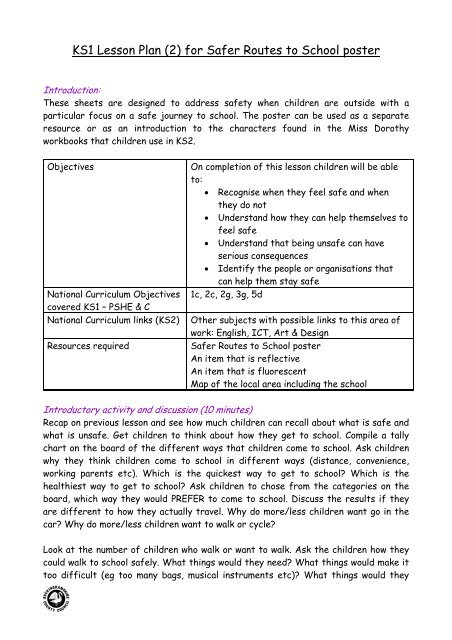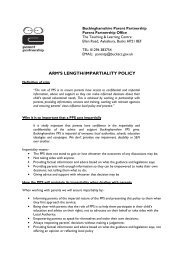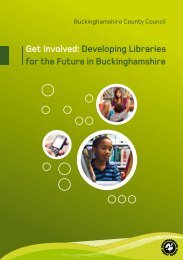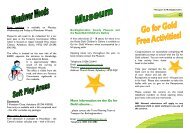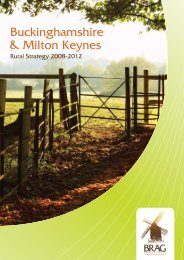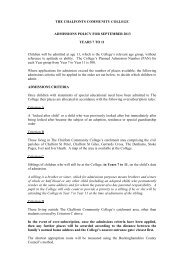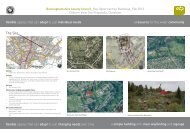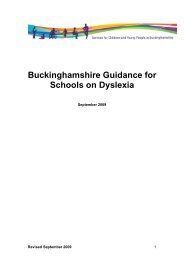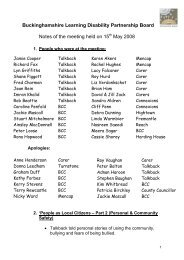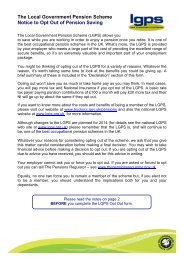Key Stage 1
Key Stage 1
Key Stage 1
You also want an ePaper? Increase the reach of your titles
YUMPU automatically turns print PDFs into web optimized ePapers that Google loves.
KS1 Lesson Plan (2) for Safer Routes to School poster<br />
Introduction:<br />
These sheets are designed to address safety when children are outside with a<br />
particular focus on a safe journey to school. The poster can be used as a separate<br />
resource or as an introduction to the characters found in the Miss Dorothy<br />
workbooks that children use in KS2.<br />
Objectives<br />
National Curriculum Objectives<br />
covered KS1 – PSHE & C<br />
National Curriculum links (KS2)<br />
Resources required<br />
On completion of this lesson children will be able<br />
to:<br />
• Recognise when they feel safe and when<br />
they do not<br />
• Understand how they can help themselves to<br />
feel safe<br />
• Understand that being unsafe can have<br />
serious consequences<br />
• Identify the people or organisations that<br />
can help them stay safe<br />
1c, 2c, 2g, 3g, 5d<br />
Other subjects with possible links to this area of<br />
work: English, ICT, Art & Design<br />
Safer Routes to School poster<br />
An item that is reflective<br />
An item that is fluorescent<br />
Map of the local area including the school<br />
Introductory activity and discussion (10 minutes)<br />
Recap on previous lesson and see how much children can recall about what is safe and<br />
what is unsafe. Get children to think about how they get to school. Compile a tally<br />
chart on the board of the different ways that children come to school. Ask children<br />
why they think children come to school in different ways (distance, convenience,<br />
working parents etc). Which is the quickest way to get to school Which is the<br />
healthiest way to get to school Ask children to chose from the categories on the<br />
board, which way they would PREFER to come to school. Discuss the results if they<br />
are different to how they actually travel. Why do more/less children want go in the<br />
car Why do more/less children want to walk or cycle<br />
Look at the number of children who walk or want to walk. Ask the children how they<br />
could walk to school safely. What things would they need What things would make it<br />
too difficult (eg too many bags, musical instruments etc) What things would they<br />
abcde


